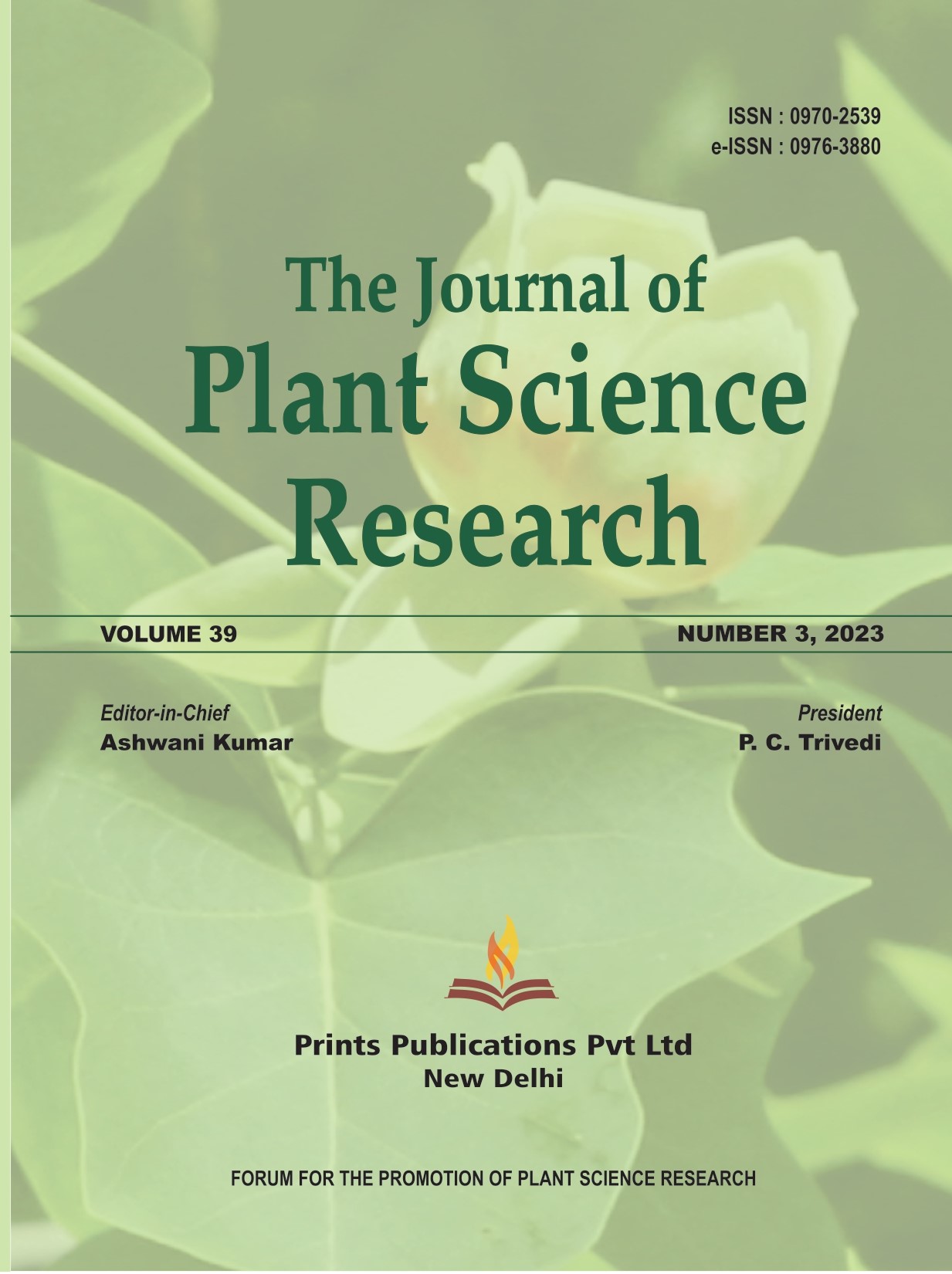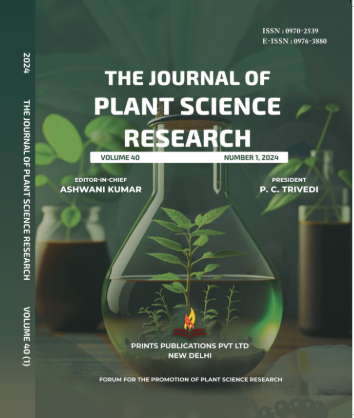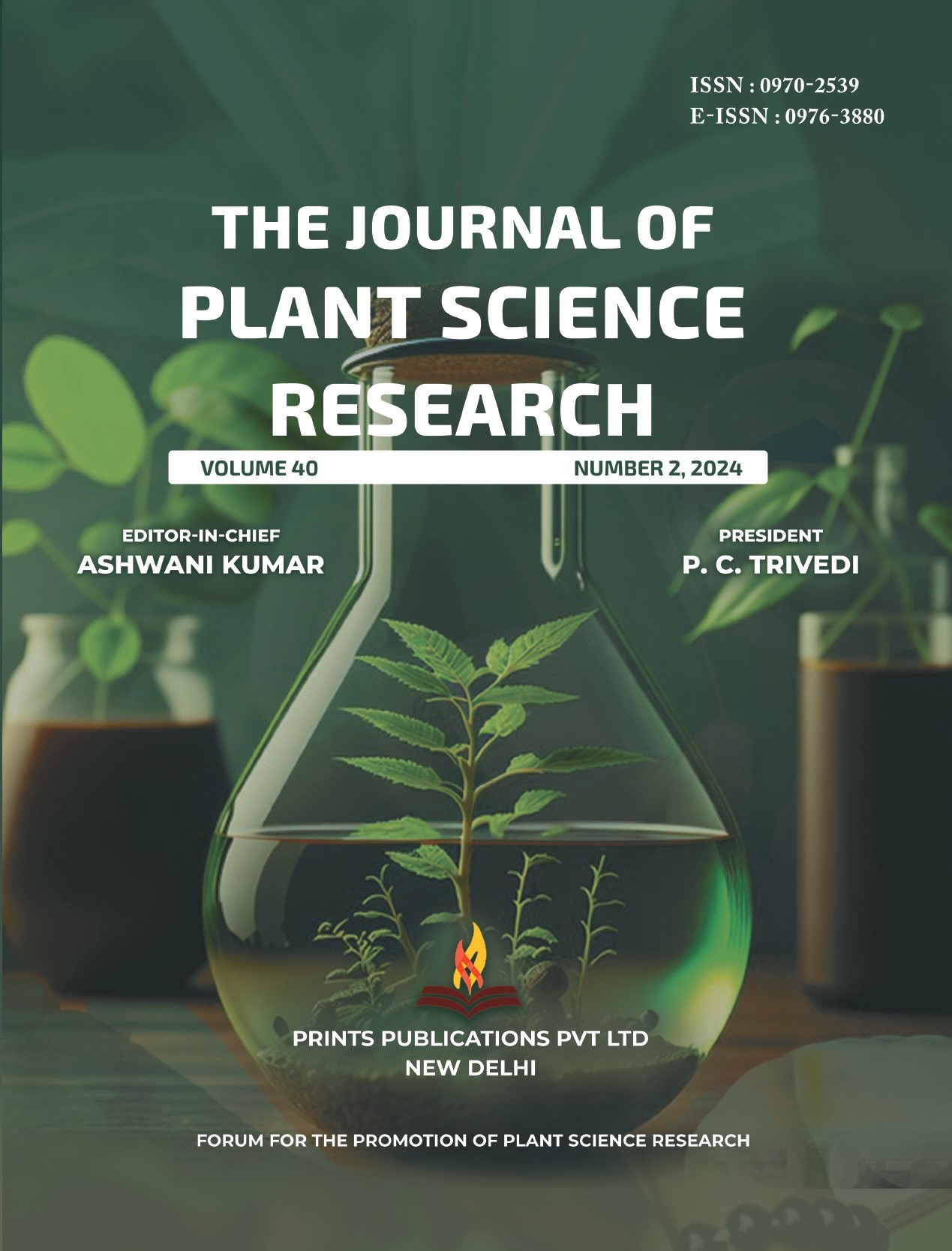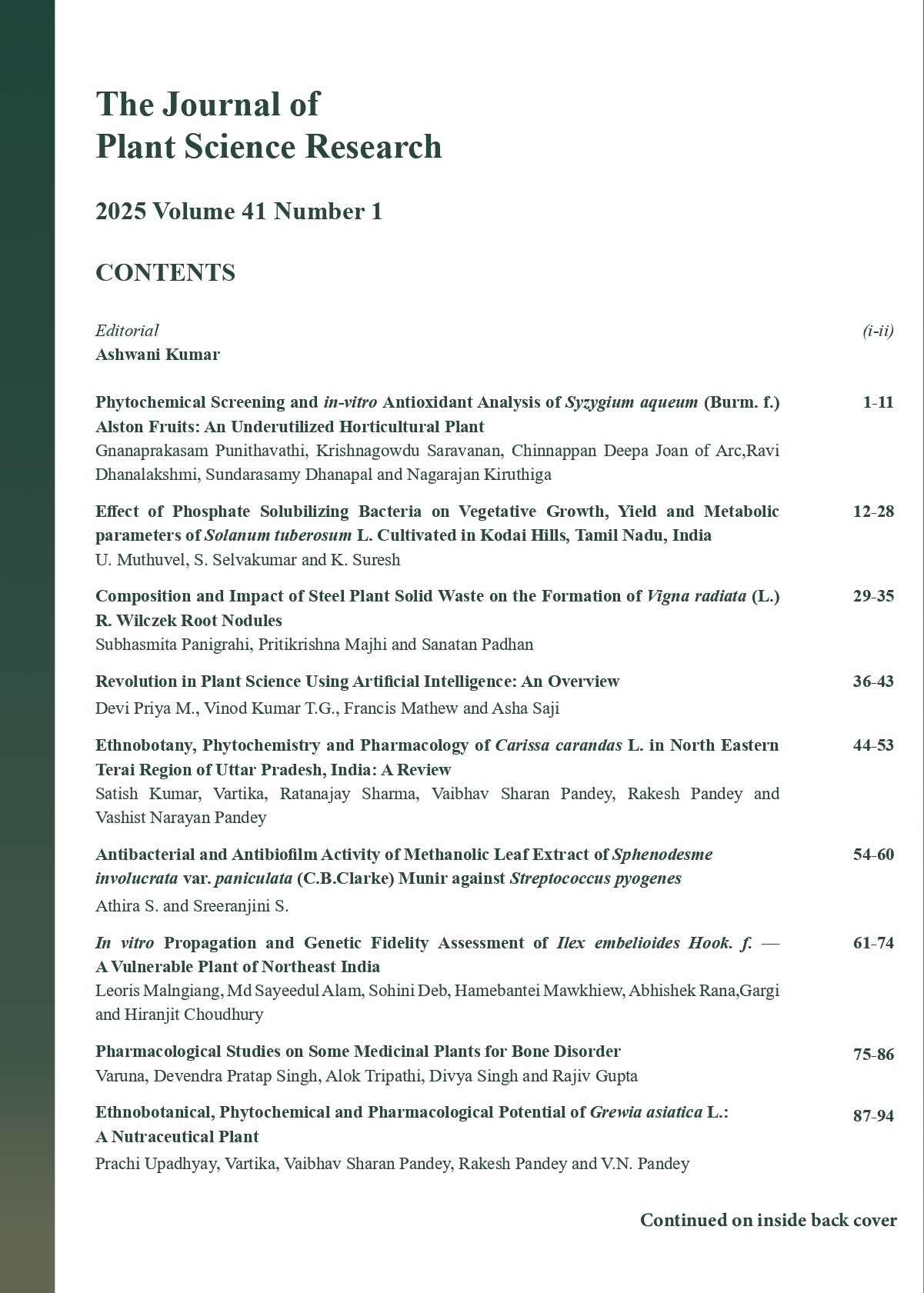The Journal of Plant Science Research - A UGC Care-Listed Journal
Published in Association with Forum For the Promotion of Plant Science Research
Current Volume: 41 (2025 )
ISSN: 0970-2539
e-ISSN: 0976-3880
Periodicity: Tri-annual
Month(s) of Publication: April, August & December
Subject: Botany
DOI: 10.32381/JPSR
Online Access is Free for Life Member
Elucidating the Significance of Nitrogen requirements in Rice Cultivation: Review
By : Babita Patni
Page No: 313-321
Abstract:
High N loss and low N use efficiency (NUE), caused by high N fertilizer inputs and inappropriate fertilization patterns, have become debating issues in the rice (Oryza sativa L.) Nitrogen (N) is the most important nutrient in irrigated rice production. The high yields of irrigated rice also gets associated with large applications of fertilizer N (Cassman et al., 1998). Although N supply drives productivity, low fertilizer N use efficiency is a major characteristic of irrigated rice systems (Cassman et al., 1998). The low fertilizer N use efficiency has to be increased in the next decades to increase rice production to meet the food demands of a rapidly growing population (Jing et. al. 2007). Rice is one of the most important food crops in China, accounting for about 28% of the total grain-sown area, 43% of total grain production, and 40% of total calorific intake in the country (Huang et al., 2001). Approximately, 30% of the nitrogen used as fertilizer in the world is consumed in China of which rice crop consumes about 37% (Peng et al., 2002). The average rate of N application for rice production in China is high and N use efficiency is low when compared with other major rice growing countries (Peng et al., 2002). Reduction of N loss enhances both N in the soil and N use efficiency, alongwith reduced environmental costs associated with denitrification and leaching of NO3 (George et al., 1993). Nitrogen fertilizer use efficiency in irrigated cultivation is lower than that of dryland rice with or without covering the soil by plastic film (Ai et al., 2003). Hence, it is important to improve N use efficiency in the rice crop in the world (Lin et. al., 2006).We must understand role of nitrogen in rice production because nitrogen is an essential plant nutrient being a important component of amino acids, nucleic acids, nucleotides, chlorophyll, enzymes, and hormones required for rapid plant growth and improves grain yield and grain quality through higher tillering, leaf area development, grain formation, grain filling, and protein synthesis. In this regard the article has focused on how the nitrogen fertilizer is applied, what is the impact of fertilizer nitrogen dose on morphophysiological, biochemical and yield attributes of rice. However, future research is required to investigate the most appropriate urea application sites and fertilization nitrogen levels for different soil types. Therefore, we could assume that adoption of suitable fertilizer dose in rice cultivation is very important in enhancing agricultural benefits.
Author:
Babita Patni : Department of Medicinal and Aromatic Plant, High Altitude Plant Physiology Research Centre Hemvati Nandan Bahuguna Garhwal University, Srinagar, Garhwal, Uttarakhand, India
DOI: https://doi.org/10.32381/JPSR.2020.36.1-2.40






